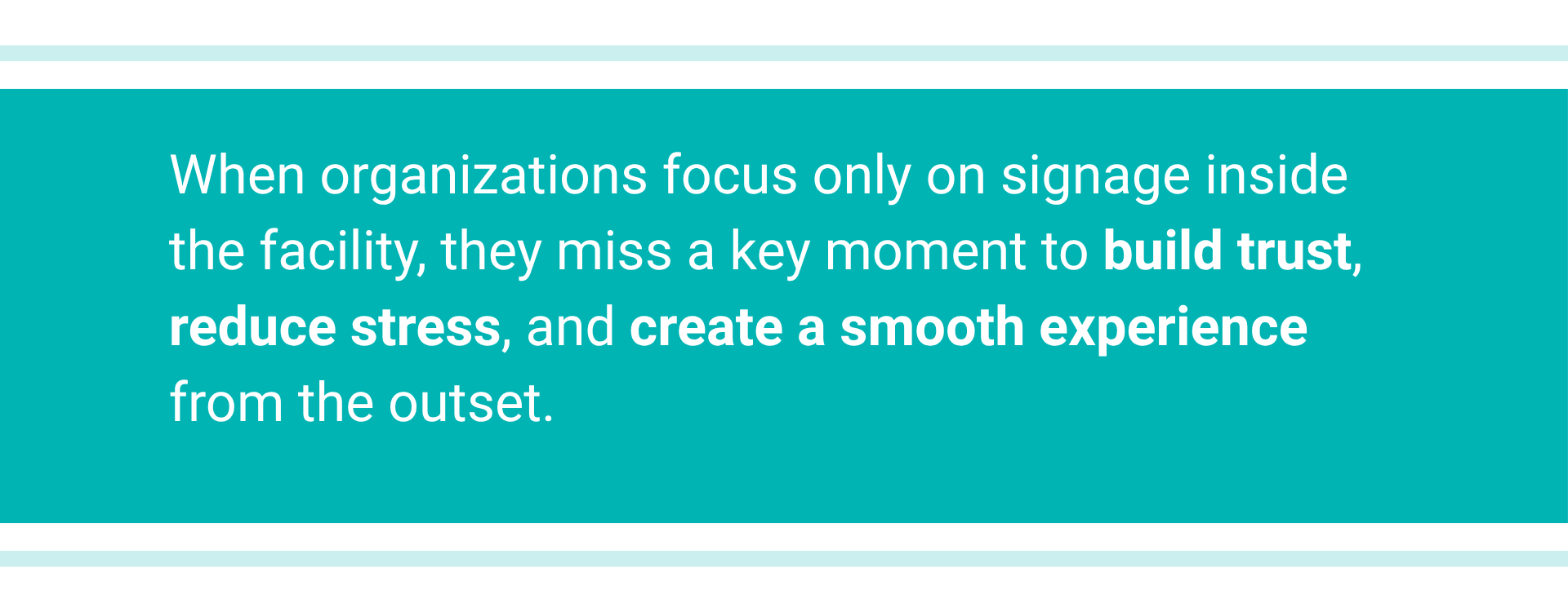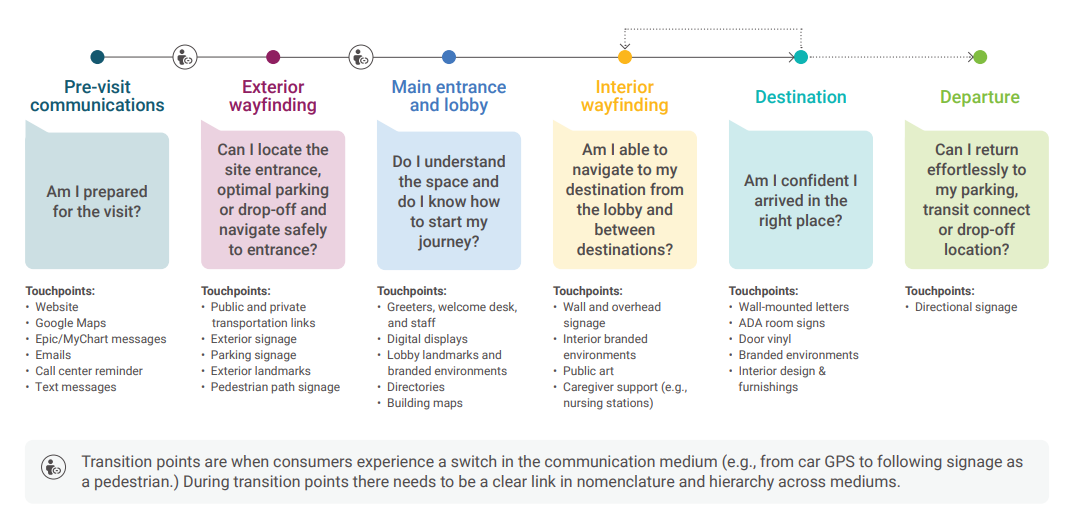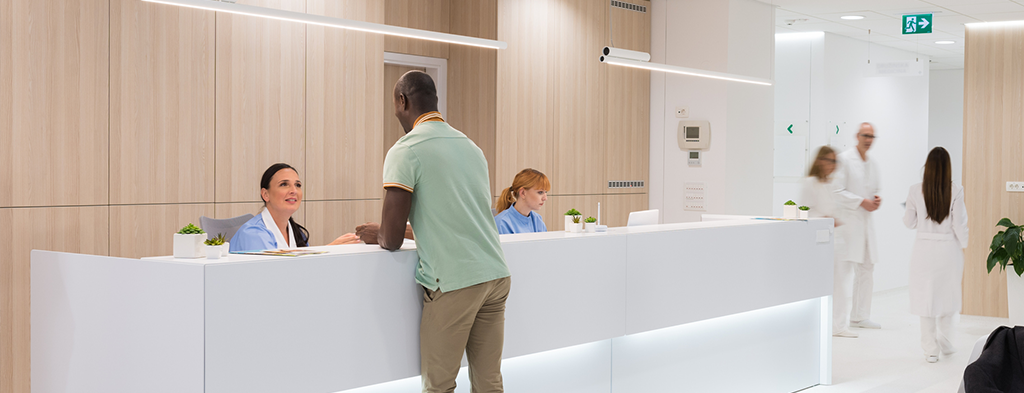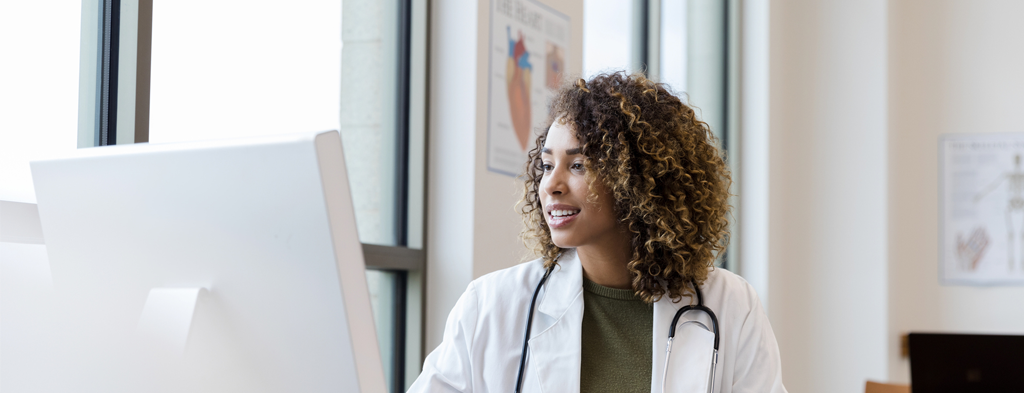Most wayfinding programs begin at the front door. But real navigation starts long before that – on your website, in a confirmation email, or even in a Google search. Whether you’re a hospital, university, or airport, that first interaction is where orientation truly begins.
In this blog, we uncover how to begin designing your wayfinding experience from the very first touchpoint, well before anyone steps on site.
It Doesn’t Start at the Entrance
Think about your visitors. They don’t start at your welcome desk. They start online, looking up directions, trying to find parking information, or searching for building hours on a mobile device.
- For patients, it might be “urgent care near me” or an appointment confirmation.
- For students and families, it’s often the admissions site, a campus tour registration page, or a dorm move-in guide.
- For travelers, it’s the airport’s mobile site, a flight tracker app, or an email about where to drop off a rental car.
When organizations focus only on signage inside the facility, they miss a key moment to build trust, reduce stress, and create a smooth experience from the outset.

Pre-Arrival Wayfinding Is Your First Impression
It sets the tone for everything that follows. Consider:
- A website that clearly communicates building entrances, accessibility routes, and walking distances.
- Branded communications that include simple maps, annotated photos, or real-time transit instructions.
- Search engine listings and wayfinding apps that reinforce brand consistency and build confidence—long before anyone parks or passes security.
These small but critical cues reduce missed appointments, campus confusion, and terminal delays. They also save staff time, enhance safety, and improve satisfaction for everyone who enters your space.
Design the Journey, Not Just the Site
We approach wayfinding as a holistic system. It’s not just about signage, it’s about crafting a journey. Our methodology evaluates each touchpoint, tailored to the audience:
- Pre-visit or pre-arrival communications
- Exterior navigation and arrival zones
- Entry and lobby areas
- Interior wayfinding and decision points
- Destination confirmation
- Departure, return, and future visits

For healthcare, that means improving confidence from home to hallway. For campuses, it’s about supporting every student from campus tour to first class. For airports, it means guiding every traveler from curb to gate and back again.
Each phase influences how your brand is experienced. And in high-stakes, high-stress environments, these wayfinding moments matter more than ever.
The Bottom Line
Navigation is emotional. It’s tied to urgency, expectation, and trust. Whether someone is anxious about a diagnosis, stepping onto campus for the first time, or racing to catch a flight, poor wayfinding erodes confidence, while thoughtful design reinforces it.
Still designing wayfinding in pieces? Reach out to Claar Ennis today at c.ennis@brandactive.com. We’ll help you create a journey that starts where your visitors actually do and supports them every step of the way.



